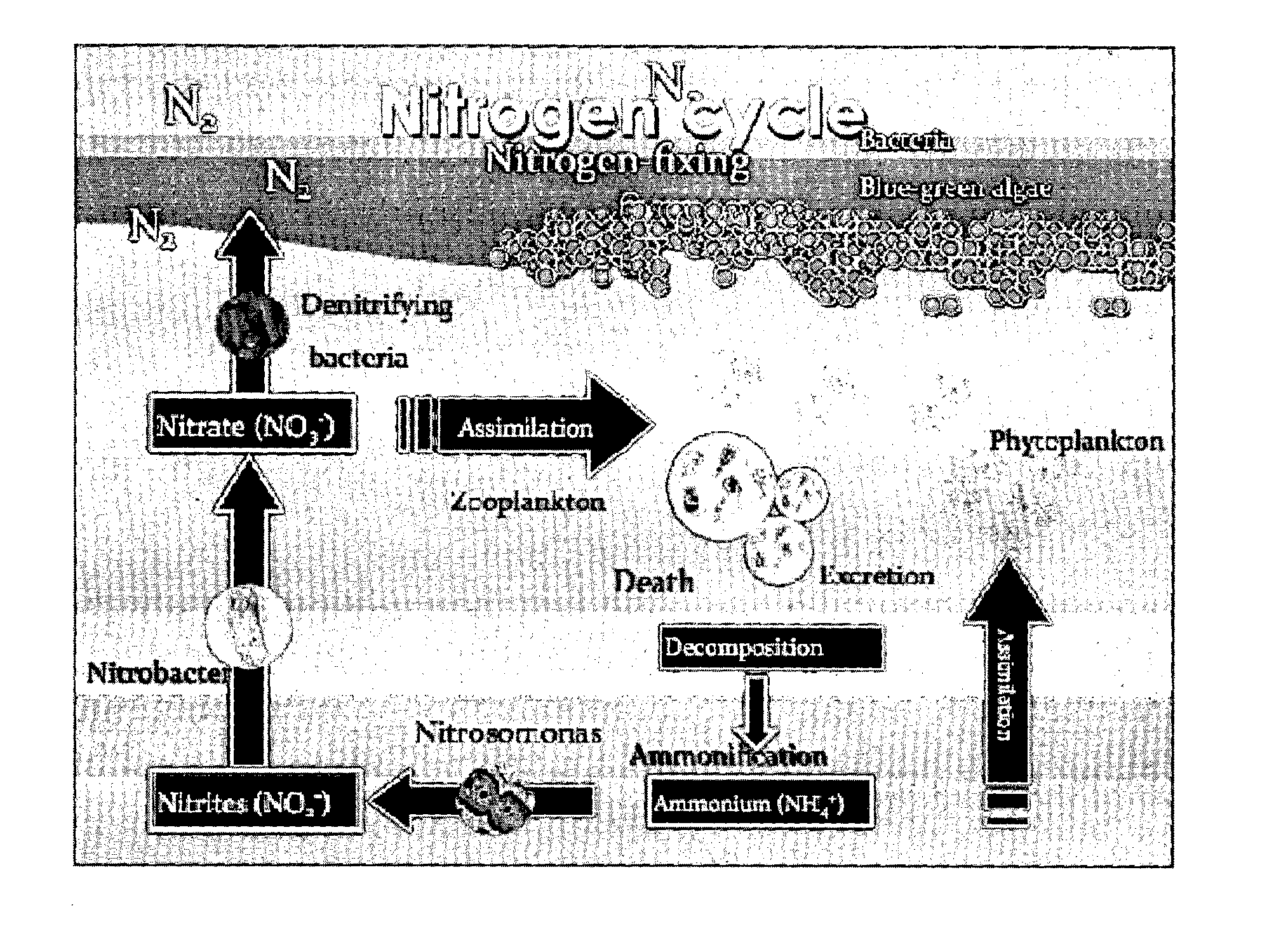Mixotrophic method of aquaculture
a technology of aquaculture and mixed-type fish, which is applied in the field of aquaculture, can solve the problems of increasing the demand for seafood produced in controlled artificial environments, significant environmental impact and competition for diminishing natural resources from other sectors, and the production of ponds continues
- Summary
- Abstract
- Description
- Claims
- Application Information
AI Technical Summary
Benefits of technology
Problems solved by technology
Method used
Image
Examples
example 1
Production Performance and Water Quality Data Records
[0200]The following table summarizes the difference in aquaculture production performance between a traditional shrimp farming system and a shrimp farm using the method of the present invention.
TABLE 1ImprovementTraditionalMixotrophic(%)Stocking density (PL / sqm)85209146Average Body Weight (g)13.6214.345ADGR (g / day)0.160.2026Survival (%)65.681.624FCR1.591.2919kg harvested / hp266677.68155kg feed day / hp4.9012.29151*hp = horsepower installed in the pond.
[0201]More detailed data tables follow after the below discussion of the results.[0202]Increase in stocking density allows harvesting more shrimp volume without affecting survival rate. The data shows that there is even an improvement in survival rate and more shrimp volume can be harvested per horsepower aerator installed (=energy saving) when the method of the present invention is implemented.[0203]Aeration management is improved in that more shrimp volume may be produced with the sam...
example 2
Economic Analysis of a 3.1 MT Shrimp Production on a Farm Using a Conventional Shrimp Farming Method Compared with an Equivalent Farm Using the (Mixotrophic)
Method of the Present Invention
General Information
[0214]Production volume equals to 3.1 MT.[0215]Feed cost equals to 1.24 SGD / kg.[0216]FCR=1.59 vs. 1.29 (Conventional vs. Mixotrophic).[0217]85 Days Of Culture (DOC).
[0218]Total pond area equals to 1.6 ha.
Liming Information:
[0219]Application 3× / week at 200 kg / ha.[0220]Lime cost is 0.124 SGD / kg. (Mixotrophic System does not use lime).
[0221]Traditional aquaculture methods often include a step of applying various acid-neutralizing compounds of calcium or calcium and magnesium to the aquaculture pond, for example before filling it with water. This is known as “liming” and has three important benefits: 1) Liming may enhance the effect of fertilization. 2) Liming helps prevent wide swings in pH. 3) Liming also adds calcium and magnesium, which are important in the proper development of ...
PUM
 Login to View More
Login to View More Abstract
Description
Claims
Application Information
 Login to View More
Login to View More - Generate Ideas
- Intellectual Property
- Life Sciences
- Materials
- Tech Scout
- Unparalleled Data Quality
- Higher Quality Content
- 60% Fewer Hallucinations
Browse by: Latest US Patents, China's latest patents, Technical Efficacy Thesaurus, Application Domain, Technology Topic, Popular Technical Reports.
© 2025 PatSnap. All rights reserved.Legal|Privacy policy|Modern Slavery Act Transparency Statement|Sitemap|About US| Contact US: help@patsnap.com


